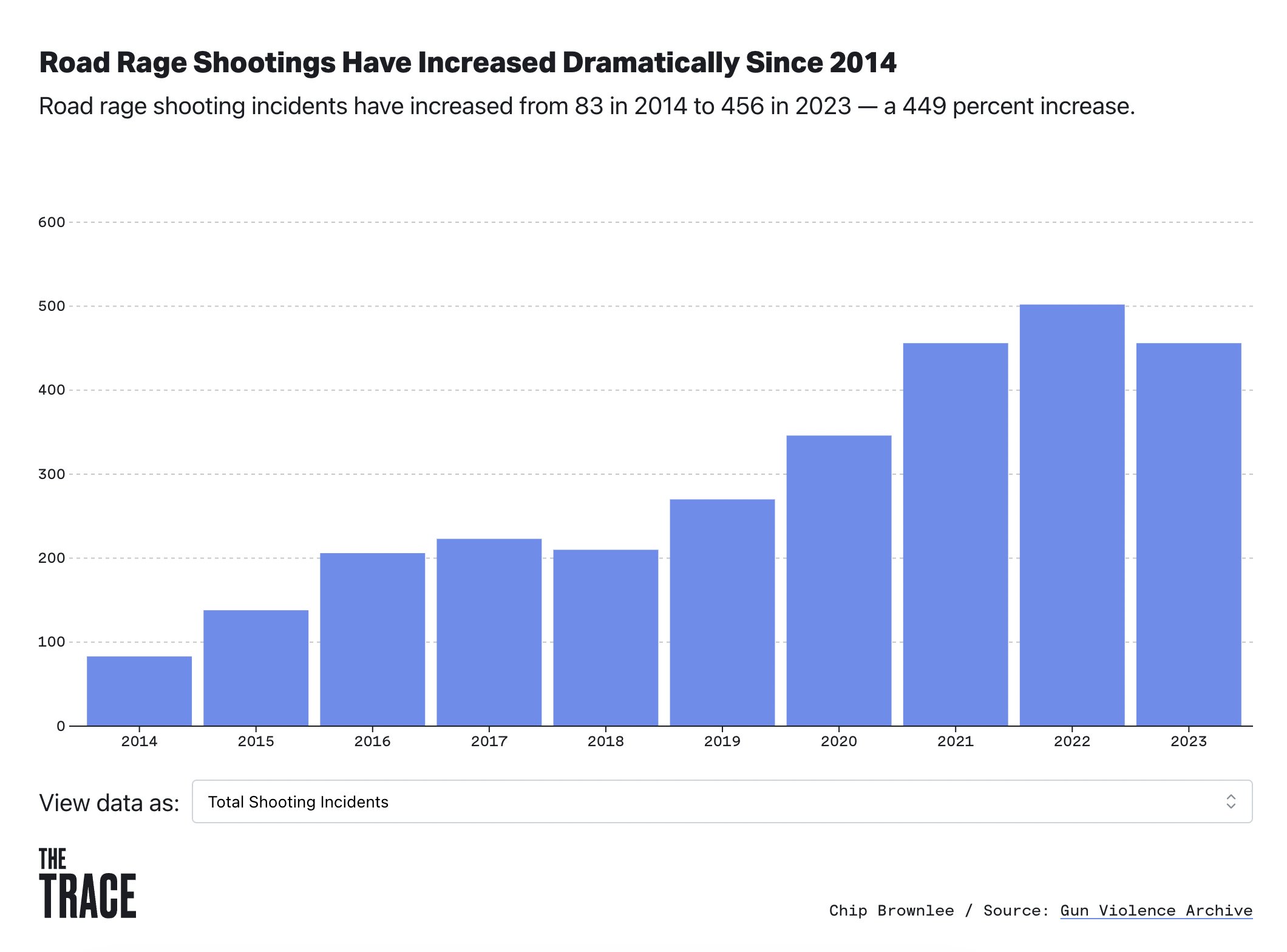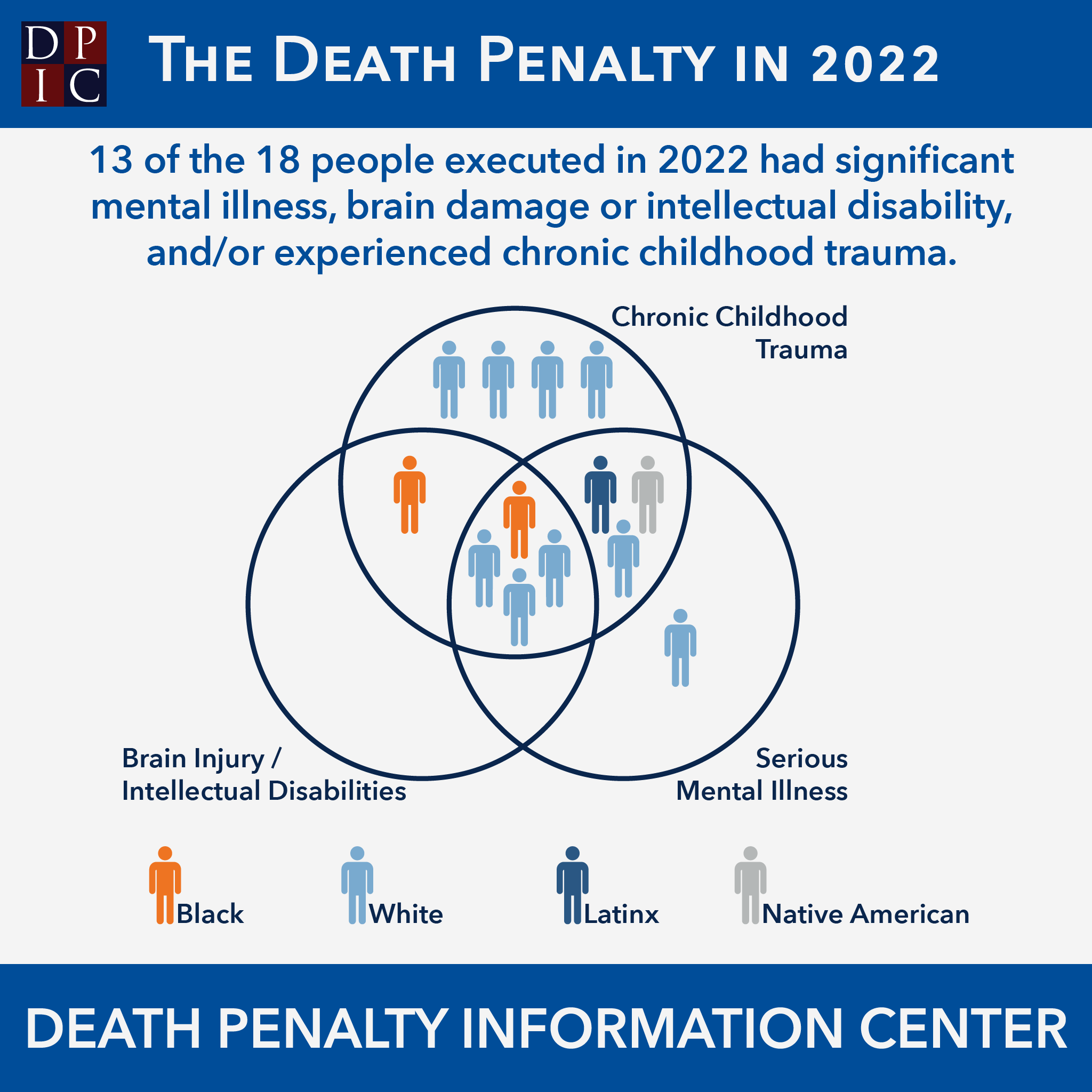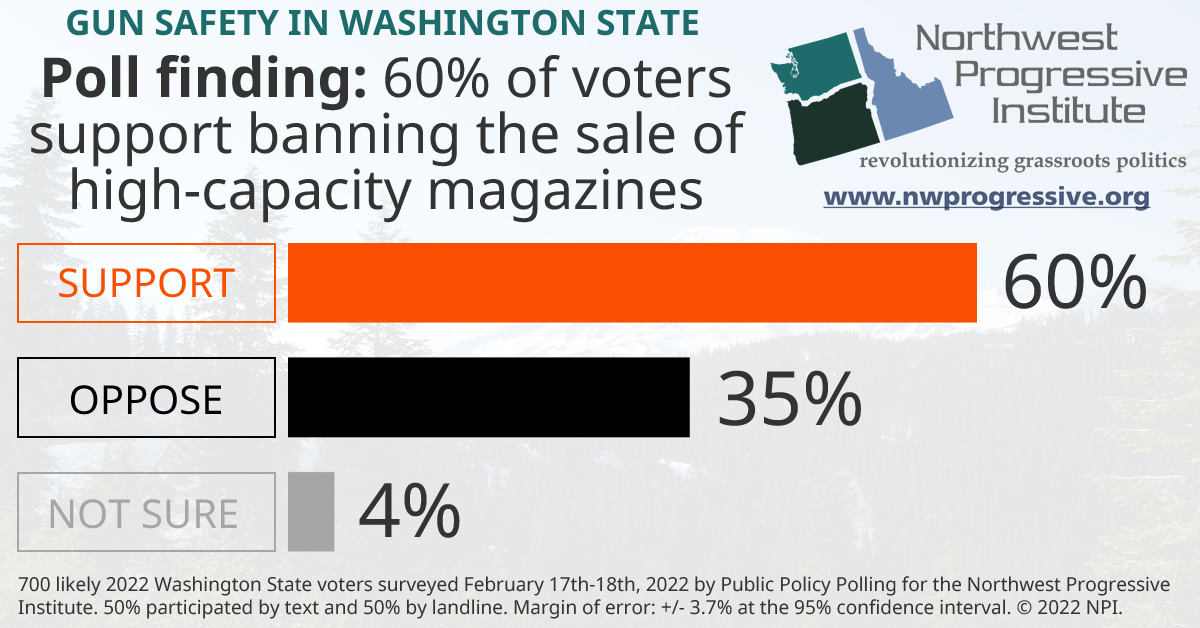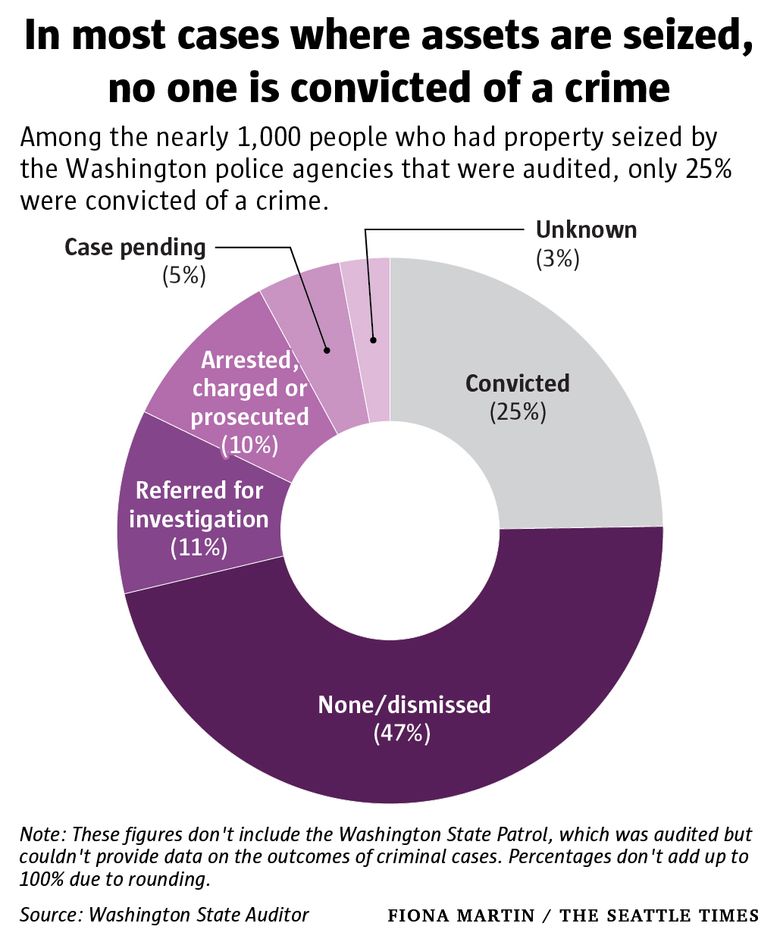Journalists Jennifer Mascia and Chip Brownlee report in The Trace that Road Rage shooting incidents have skyrocketed over the past decade. A new analysis finds an increase of incidents from 83 nationally in 2014 to 456 in 2023 — a nearly 450% jump.
The findings, from an analysis of Gun Violence Archive (GVA) data by gun violence newsroom The Trace, mirror a broader increase in gun-related violence. All told, angry drivers shot 3,095 people over that decade, or nearly one every day. One in four of those people — 777 — were killed.
Caveat: The GVA is a private non-profit that produces a range of gun violence estimates based on police reports, government data, news stories and more.
Law enforcement agencies do not release statistics on road rage shootings as a specific category of crime. But GVA tracks incidents in which someone in a car fires at a driver or passenger in another vehicle or brandishes a gun in a threatening manner. The close of 2023 marked the collection of 10 full years of data, and although not all gun-related road rage incidents make the news or are reported to police, GVA provides the most comprehensive picture of gun violence on the nation’s roads and highways.
Since 2014, gun-involved road rage incidents have more than doubled, and the number of victims killed or injured has increased more than fivefold, the data shows. When we looked specifically at shootings — incidents in which either a victim or suspect was shot — the increase is even more consistent. The number of road rage shootings tracked by GVA increased by an average of 23 percent each year over the past decade.
Road rage shootings are on the rise across the United States as drivers increasingly turn to firearms to vent their frustrations — with often tragic consequences.
Between 2014 and 2023, the number of people shot in road rage incidents surged more than 400 percent, from 92 to 481, according to a Trace analysis of data from the nonprofit Gun Violence Archive. All told, angry drivers shot 3,095 people over that decade, or nearly one every day. One in four of those people — 777 — were killed.
Law enforcement agencies do not release statistics on road rage shootings as a specific category of crime. But GVA tracks incidents in which someone in a car fires at a driver or passenger in another vehicle or brandishes a gun in a threatening manner. The close of 2023 marked the collection of 10 full years of data, and although not all gun-related road rage incidents make the news or are reported to police, GVA provides the most comprehensive picture of gun violence on the nation’s roads and highways.
Since 2014, gun-involved road rage incidents have more than doubled, and the number of victims killed or injured has increased more than fivefold, the data shows. When we looked specifically at shootings — incidents in which either a victim or suspect was shot — the increase is even more consistent. The number of road rage shootings tracked by GVA increased by an average of 23 percent each year over the past decade.
Someone was shot in a road rage incident on average every 18 hours in 2023, up from once every four days in 2014.
These shootings are happening in almost every corner of the country. Many are prompted by collisions or motorists cutting each other off in traffic, while the motivations for others aren’t always clear.
My opinion? Clearly, the number of guns in circulation continues growing as many states relax their gun control laws. It’s possible that road rage incidents that otherwise would’ve been an exchange of middle fingers turn into shootouts. However, it’s also possible that self-defense could justify these actions.
Please contact my office if you, a friend or family member are charged with a Firearm Offense or any other crime. Hiring an effective and competent defense attorney is the first and best step toward justice.


















